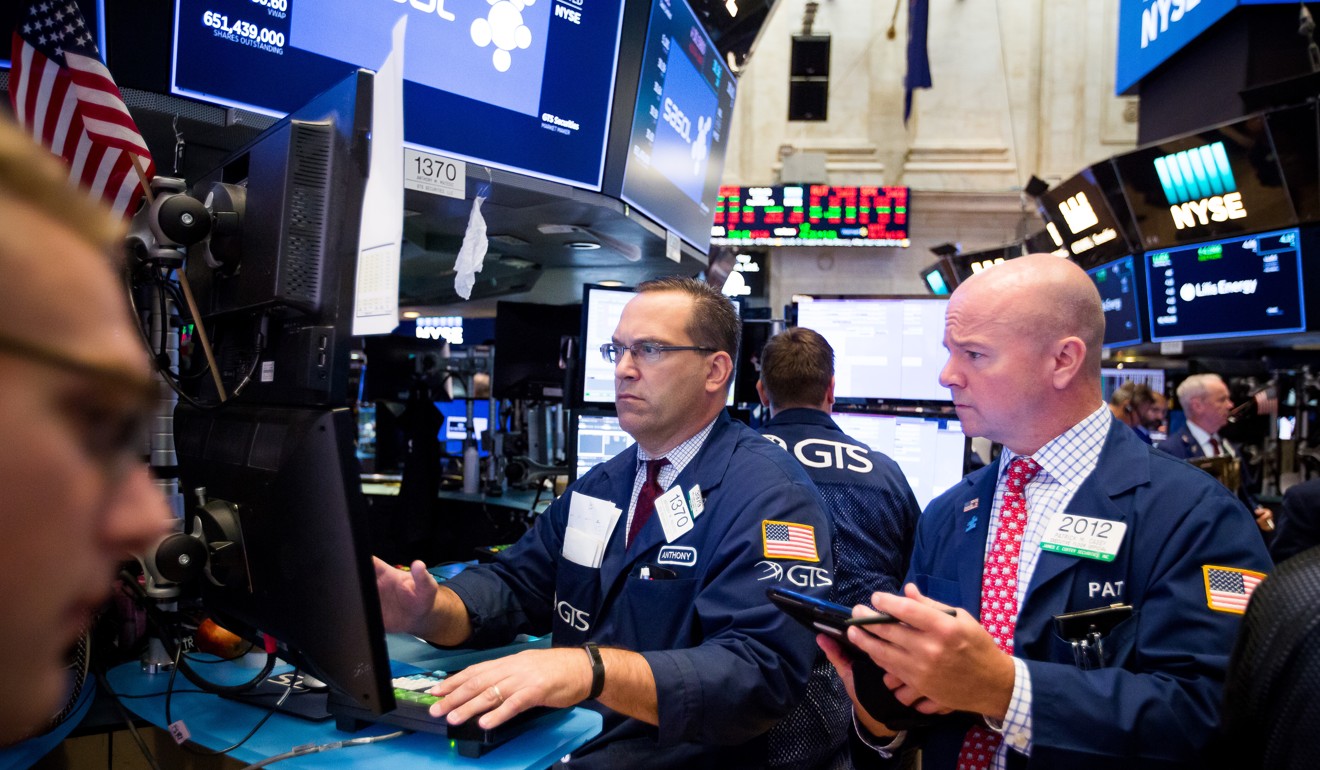
Dramatic moves in markets owe much to plunging dollar
Loosening in liquidity conditions is fuelling a reach for yield, and the weaker greenback is increasing investor appetite for risk, boosting cross-border capital flows in the greenback
What do the People’s Bank of China’s recent efforts to curb the rally in the yuan, mounting concerns over persistently low inflation in the euro zone, and Tajikistan’s inaugural 10-year international bond sale last week all have in common?
These are just three of the many recent developments in financial markets that have been heavily influenced by the plunge in the dollar since the beginning of this year.
In what has quickly and unexpectedly become the most excruciating “pain trade” for global investors - as recently as March, a “long”, or overweight, position in the dollar was one of the most “crowded trades”, according to a monthly fund manger survey by Bank of America Merrill Lynch – the 10.5 per cent fall in the dollar index (a gauge of the greenback’s performance against a basket of other currencies) since early January is now a crucial driver of markets and is having a profound impact on investors’ asset allocation strategies.
The greenback’s steep decline has contributed to a sharp easing in global financial conditions in the face of a rise in benchmark interest rates in the United States and a hawkish tilt in monetary policy on the part of several other major central banks, in particular the ECB
In foreign exchange markets, sentiment has shifted decisively against the dollar over the past several months.
A “short”, or underweight position in the greenback, is now one of the most popular trades, according to the fund manager survey.
Sentiment towards the euro, on the other hand, which has shot up 14 per cent against the dollar this year to its highest level since January 2015, has improved dramatically.
According to data from the US Commodities Futures Trading Commission, currency investors are holding their biggest net long positions in the euro versus the dollar since May 2011 – just before the outbreak of the euro zone debt crisis.
Emerging market currencies have also benefited hugely from the dollar’s retreat, buoying local currency bond and equity markets. According to JPMorgan, cumulative inflows into emerging market mutual bond and equity funds since the start of this year have surged to more than US$130 billion, more than three times the level for the whole of last year and putting them on track to exceed the US$150 billion of inflows in 2012.

Most importantly, the greenback’s steep decline has contributed to a sharp easing in global financial conditions in the face of a rise in benchmark interest rates in the United States and a hawkish tilt in monetary policy on the part of several other major central banks, in particular the European Central Bank.
This loosening in liquidity conditions is fuelling the so-called reach for yield, with investors pouring money into “risk assets” to generate higher returns.
Last week, US junk bond – non-investment grade corporate debt – funds attracted inflows of more than US$1 billion for only the sixth time this year, according to EPFR Global, a data provider.
The role of the dollar as the new “fear gauge” in markets – the traditional measure of risk aversion, the so-called Vix Index which remains at historically low levels, is no longer viewed as a reliable indicator of sentiment – was highlighted by the Bank for International Settlements (BIS), the central bankers’ bank, late last year.
Due to the surge in dollar-denominated liabilities, a weaker greenback increases investors’ appetite for risk boosting cross-border capital flows in dollars, the BIS noted.
Last week, US junk bond – non-investment grade corporate debt – funds attracted inflows of more than US$1 billion for only the sixth time this year, according to EPFR Global, a data provider
There are forcing arguments in favour of further dollar weakness.
Not only does Donald Trump’s crisis-ridden presidency bode ill for the enactment of the aggressive tax cuts investors have been eagerly anticipating (a key driver of the dollar’s sharp rise late last year), other central banks, particularly the ECB, are sounding much more hawkish, keeping the greenback under strain.
Yet the sharp slide in the dollar is a double-edged sword.
While the greenback’s steep decline is easing financial conditions, it is also helping inflate asset bubbles in markets, particularly in the US equity and junk bond markets, as well as in emerging market corporate bonds.
The latest BAML fund manager survey, published on Tuesday, revealed the largest increase in hedging activity (buying protection against a steep decline in equity markets) in more than a year. This is a clear sign that global investors are becoming nervous – and rightly so.
A sharper depreciation in the dollar is not a one-way bet – far from it. A more hawkish-than-expected Federal Reserve and a more dovish-than-anticipated ECB – a distinct possibility that markets may be underestimating – would cause the dollar to resume its ascent.
What is clear is that the direction of the greenback will continue to be a crucial determinant of market sentiment. Dollar-watchers will be glued to their screens.
Nicholas Spiro is a partner at Lauressa Advisory

